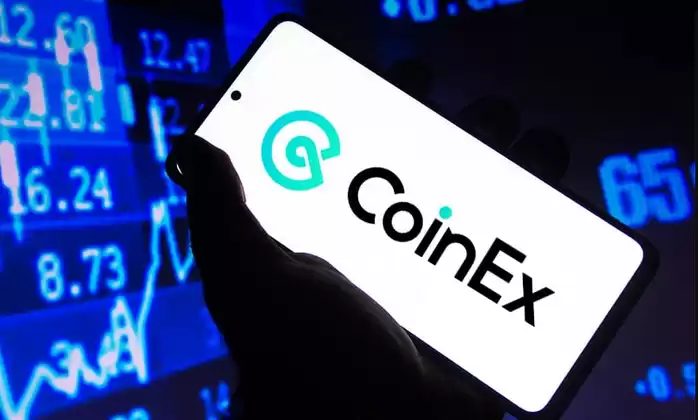-
 bitcoin
bitcoin $123963.239194 USD
1.37% -
 ethereum
ethereum $4529.082464 USD
1.07% -
 xrp
xrp $2.983640 USD
0.71% -
 tether
tether $1.000287 USD
0.02% -
 bnb
bnb $1179.874393 USD
2.99% -
 solana
solana $230.633678 USD
1.55% -
 usd-coin
usd-coin $0.999835 USD
0.03% -
 dogecoin
dogecoin $0.254240 USD
1.34% -
 tron
tron $0.341176 USD
0.15% -
 cardano
cardano $0.842285 USD
0.52% -
 hyperliquid
hyperliquid $48.537896 USD
-0.86% -
 chainlink
chainlink $21.863092 USD
-0.84% -
 ethena-usde
ethena-usde $0.999743 USD
-0.07% -
 sui
sui $3.579561 USD
-0.18% -
 stellar
stellar $0.403418 USD
2.67%
How to make money trading CoinEx contracts
CoinEx's contract trading platform empowers traders with leverage, margin trading, perpetual contracts, and advanced strategies to generate potential returns in the cryptocurrency market.
Nov 25, 2024 at 03:17 am

How to Make Money Trading CoinEx Contracts: A Comprehensive Guide
Introduction
CoinEx, a renowned cryptocurrency exchange, offers a comprehensive contract trading platform that provides traders with the opportunity to leverage their trading strategies and potentially generate substantial returns. This guide will delve into the intricacies of CoinEx contract trading, empowering you with the knowledge and insights to navigate this dynamic and lucrative market effectively.
Understanding CoinEx Contract Trading
1. What are CoinEx Contracts?CoinEx contracts are financial instruments that derive their value from the underlying asset, typically a cryptocurrency. They allow traders to speculate on the price movements of these assets without actually owning them.
2. Contract SpecificationsEach contract on CoinEx has specific characteristics such as:
- Contract size (e.g., 100,000 USDT)
- Price index (e.g., BTC/USDT)
- Funding rate (charged every 8 hours)
- Expiration date (when the contract expires)
CoinEx offers two main contract types:
- USDT-Margined Contracts: These contracts are margined using USDT.
- Coin-Margined Contracts: These contracts are margined using the underlying asset (e.g., BTC).
Step-by-Step Guide to Trading CoinEx Contracts
1. Create and Fund an AccountBegin by creating a CoinEx account and verifying your identity. Once your account is active, deposit funds to fund your trading account.
2. Choose a ContractSelect a contract that aligns with your trading strategy and risk tolerance. Consider factors such as the underlying asset, contract size, and expiration date.
3. Place an OrderOnce you have selected a contract, determine your order type (e.g., limit order, market order). Specify the quantity and price of the order.
4. Manage Your PositionMonitor your open positions closely. Adjust your stop-loss and take-profit orders as needed to manage risk and optimize profits.
5. Close Your PositionWhen ready, close your position to realize your profits or losses. You can close your position by placing an order with the opposite side (e.g., selling after buying).
Advanced Concepts
1. Leverage and Margin TradingCoinEx contracts allow you to use leverage, which amplifies your potential returns but also increases your risk. Margin trading involves borrowing funds to increase your purchasing power.
2. Funding RateThe funding rate is a fee charged or paid to maintain open positions. It is determined by the supply and demand for the contract.
3. Perpetual ContractsPerpetual contracts have no expiration date, allowing traders to hold positions indefinitely. However, they do have a funding rate.
4. Trading StrategiesEffective contract trading requires a well-defined trading strategy. Common strategies include scalping, trend following, and range trading.
Tips for Success
- Understand Risk: Contract trading involves significant risk. Only trade with funds you can afford to lose.
- Educate Yourself: Dedicate time to learning about contract trading concepts, strategies, and risk management.
- Practice: Use a demo account to practice trading before risking real funds.
- Monitor the Market: Stay abreast of market news and price movements affecting the underlying asset.
- Control Your Emotions: Avoid making impulsive trades based on emotions. Stick to your trading plan.
- Trade Responsibly: Manage your positions carefully, set realistic profit and loss targets, and adhere to sound risk management principles.
Disclaimer:info@kdj.com
The information provided is not trading advice. kdj.com does not assume any responsibility for any investments made based on the information provided in this article. Cryptocurrencies are highly volatile and it is highly recommended that you invest with caution after thorough research!
If you believe that the content used on this website infringes your copyright, please contact us immediately (info@kdj.com) and we will delete it promptly.
- BlockDAG, DOGE, HYPE Sponsorship: Crypto Trends Shaping 2025
- 2025-10-01 00:25:13
- Deutsche Börse and Circle: A StableCoin Adoption Powerhouse in Europe
- 2025-10-01 00:25:13
- BlockDAG's Presale Buzz: Is It the Crypto to Watch in October 2025?
- 2025-10-01 00:30:13
- Bitcoin, Crypto, and IQ: When Genius Meets Digital Gold?
- 2025-10-01 00:30:13
- Stablecoins, American Innovation, and Wallet Tokens: The Next Frontier
- 2025-10-01 00:35:12
- NBU, Coins, and Crypto in Ukraine: A New Yorker's Take
- 2025-10-01 00:45:14
Related knowledge

Practical parameter settings for a Bitcoin multi-timeframe moving average system
Sep 18,2025 at 10:54pm
Optimizing Timeframe Combinations for Bitcoin Trading1. Selecting appropriate timeframes is crucial when building a multi-timeframe moving average sys...

How can I filter out false breakouts in Dogecoin high-frequency trading?
Sep 22,2025 at 01:00am
Understanding False Breakouts in Dogecoin Trading1. A false breakout occurs when Dogecoin's price appears to move beyond a defined support or resistan...

Techniques for identifying tops and bottoms in the Bitcoin on-chain NVT model
Sep 20,2025 at 07:54pm
Understanding the NVT Model in Bitcoin Analysis1. The Network Value to Transactions (NVT) ratio is often described as the 'P/E ratio' of the cryptocur...

What does the surge in open interest in Bitcoincoin futures mean?
Sep 20,2025 at 11:18pm
Understanding the Surge in Dogecoin Futures Open Interest1. A surge in open interest within Dogecoin futures indicates a growing number of active cont...

How can I use the Ethereum USDT premium to gauge market sentiment?
Sep 18,2025 at 11:55pm
Understanding the Ethereum USDT Premium1. The Ethereum USDT premium refers to the price difference between USDT (Tether) traded on Ethereum-based plat...

What should I do if Ethereum staking yields decline?
Sep 20,2025 at 06:18am
Understanding the Causes Behind Declining Ethereum Staking Yields1. The Ethereum network transitioned to a proof-of-stake consensus mechanism with the...

Practical parameter settings for a Bitcoin multi-timeframe moving average system
Sep 18,2025 at 10:54pm
Optimizing Timeframe Combinations for Bitcoin Trading1. Selecting appropriate timeframes is crucial when building a multi-timeframe moving average sys...

How can I filter out false breakouts in Dogecoin high-frequency trading?
Sep 22,2025 at 01:00am
Understanding False Breakouts in Dogecoin Trading1. A false breakout occurs when Dogecoin's price appears to move beyond a defined support or resistan...

Techniques for identifying tops and bottoms in the Bitcoin on-chain NVT model
Sep 20,2025 at 07:54pm
Understanding the NVT Model in Bitcoin Analysis1. The Network Value to Transactions (NVT) ratio is often described as the 'P/E ratio' of the cryptocur...

What does the surge in open interest in Bitcoincoin futures mean?
Sep 20,2025 at 11:18pm
Understanding the Surge in Dogecoin Futures Open Interest1. A surge in open interest within Dogecoin futures indicates a growing number of active cont...

How can I use the Ethereum USDT premium to gauge market sentiment?
Sep 18,2025 at 11:55pm
Understanding the Ethereum USDT Premium1. The Ethereum USDT premium refers to the price difference between USDT (Tether) traded on Ethereum-based plat...

What should I do if Ethereum staking yields decline?
Sep 20,2025 at 06:18am
Understanding the Causes Behind Declining Ethereum Staking Yields1. The Ethereum network transitioned to a proof-of-stake consensus mechanism with the...
See all articles










































































